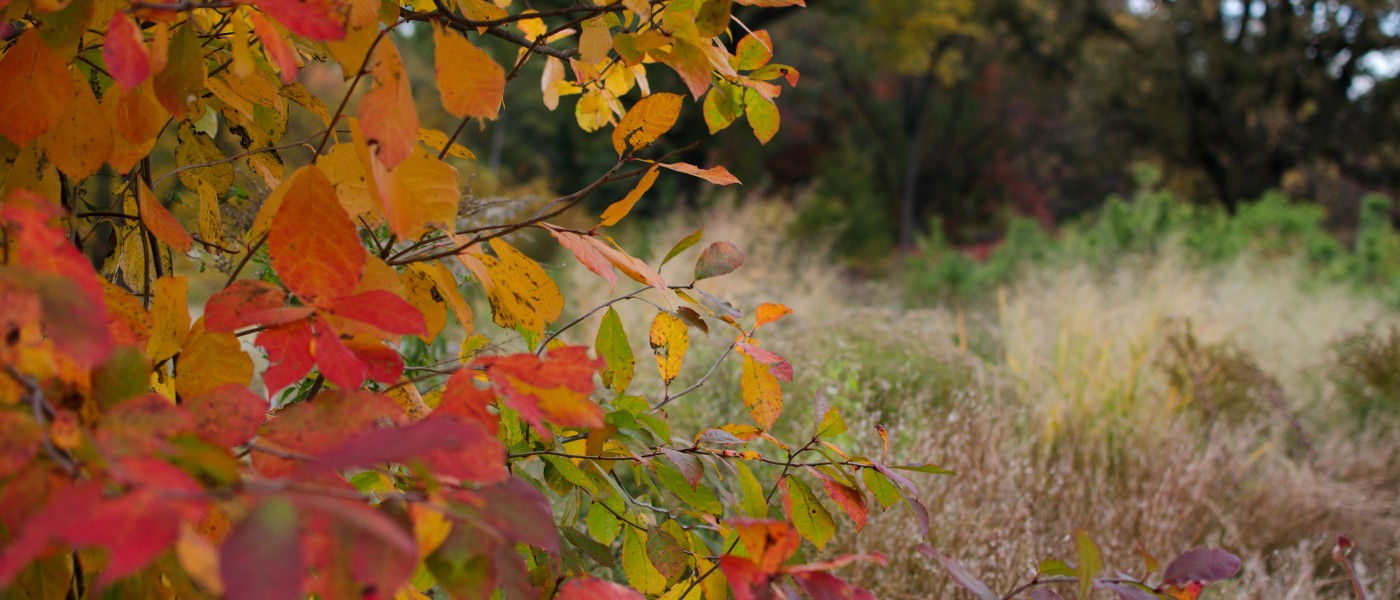Putting Your Garden to Bed for Winter
Unlike the caffeinated rush of spring gardening, with its successive blooms and fresh growth, autumn invites a slower, more reflective pace. Plants are starting to die back, some headed to dormancy, and colorful leaves are falling like confetti on New Year’s Eve—beautiful with a twinge of melancholy.
While there’s not as much to do in the garden in fall as in spring, winter prep is a key part of any gardener’s calendar, whether you’re working in a backyard, community garden plot, containers, or any outdoor space where plants grow.
Mulching
Mulching can be done throughout the year, and fall is a great time to nestle mulch around perennial plants. (Try to leave a few small patches of bare ground or light leaf cover for ground-nesting bees, who need access to bare soil.)
Among the well-known benefits of organic mulch is winter protection. A good 2–3 inch layer of mulch in the fall can act as insulation and help prevent shallow-rooted perennials from heaving. When winter temperatures fluctuate between freezing and thawing, soil may expand and contract, effectively pushing plants out of the ground.
My favorite mulch materials are free! Fallen leaves and other existing dead plant matter are good for the soil and support a rich web of organisms. You can also purchase wood chips or straw.


Simply leaving dead annual or perennial plant material in place, whether in the ground or in a container, is another excellent practice, for several reasons. In addition to offering the benefits of mulch, it also maintains a habitat for beneficial insects to overwinter, provides nesting material for birds and squirrels, and, if seed heads remain, may offer a food source for wildlife. And delicate stems, swaying grasses, and persistent seed heads are a lovely sight in the winter.
(One important caveat: If you noticed any signs of disease or harmful pests on those plants during the growing season, it’s best to remove them completely.)
Saving Seeds
Harvesting seeds to save and grow next season is, in a word, delightful. Many of the plants we grow for their flowers, as well as vegetables such as beans and peas, produce mature seeds inside dried fruits, making it very easy to collect and package instantly.
It can be surprising just how many seeds one flower can make, and the variety of seed shapes, colors, and sizes is remarkable. Consider harvesting extra to share with fellow gardeners in your community.
A few basic tips: Do your collecting on a dry day, only harvest fully mature, dry seeds, and store them in labeled paper envelopes (plant name and date!) in a location that is dry and cool. (To learn more, watch BBG gardener Patrick Austin demonstrate how to harvest sunflower seeds.)
While working on an organic vegetable farm, I learned that if you add the temperature (in degrees Fahrenheit) and the humidity level of your storage location, the sum should be less than 100. For example, storing seed at 68°F with 20% humidity = 88, which works!
Planting Spring-Blooming Bulbs and Garlic
If you’re still hoping to plant spring-flowering bulbs like tulips, daffodils, and crocuses, don’t worry—you likely still have time.

Ideally, these bulbs should be planted about six weeks before the ground freezes, so they can push out some roots before the dead of winter. For New York City’s plant hardiness zone, 7b, the suggested deadline is mid-to-late November, but I’ve pushed it to early December without a problem.
If you have the space, consider planting some edible bulbs like garlic or shallots. These crops will be ready for harvest in July, so they work well in a veggie patch or container that you plan to succession plant with a later-season vegetable such as beans, chard, or radishes.
An old rule of thumb is to plant bulbs at a depth three times their height. Make sure the wider, flatter root side is facing down, and the pointier shoot side is facing up. Covering the soil with about 2 inches of mulch helps protect bulbs from frost. If squirrels are a problem, cover with a layer of chicken wire or screening, and remove in spring once the shoots emerge.
Composting
If you keep a backyard or community garden compost pile, fall is a great time to sift finished compost and use it to top dress garden beds. Top-dressing simply means scattering it around your plants, and it can be done any time of year. Over time, nutrients from the compost will make their way down into the root zone.
Maintaining a compost pile that is about 3-by-3-feet means microbes, worms, and other decomposers will be warm enough to keep working (albeit slower than in the growing season) throughout the winter.
Keeping your pile itself covered with a couple of inches of finished compost will help insulate it and also deter hungry critters.
Maintenance, reflecting, and dreaming
One task that often gets skipped during the busy season is tool maintenance.
Before putting your metal tools to bed, clean and disinfect them, remove any rust with sandpaper or a wire brush, and rub the surfaces with a rag coated in mineral oil to help seal the metal from oxygen and extend your tools’ lives for another year. While you’re at it, sharpen and oil your pruning shears.

After snipping your last bunch of herbs to bring in to dry, grab a notebook and consider what worked well this season. What do you want to do differently next year? Keeping an ongoing garden journal is a great practice, whether you garden in a yard or a street tree bed.
In mine, which I’ve been keeping since 2003, I note bloom times, when I’ve pruned, relocated, or divided plants, and list new plants acquired as well as any that didn’t make it. This year I’m writing a reminder to never plant tender pineapple sage (it got huge!) in the ground in my tiny backyard. I’ll try it in a container next year.


